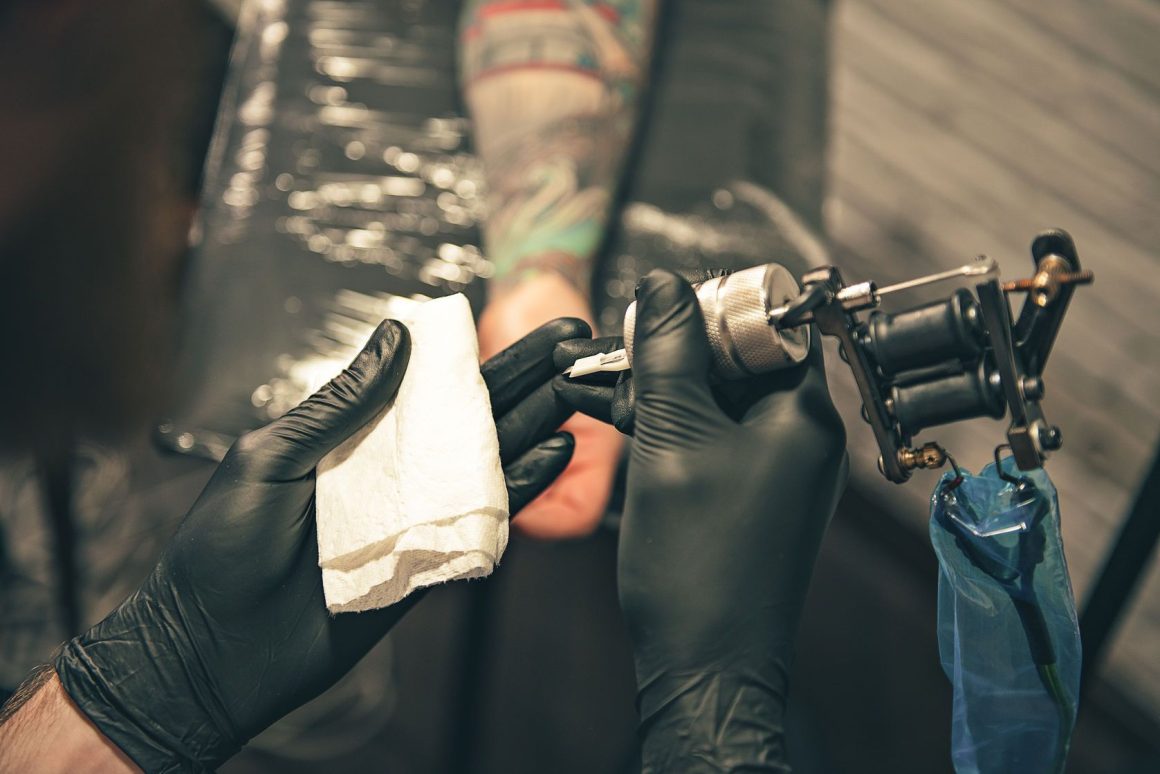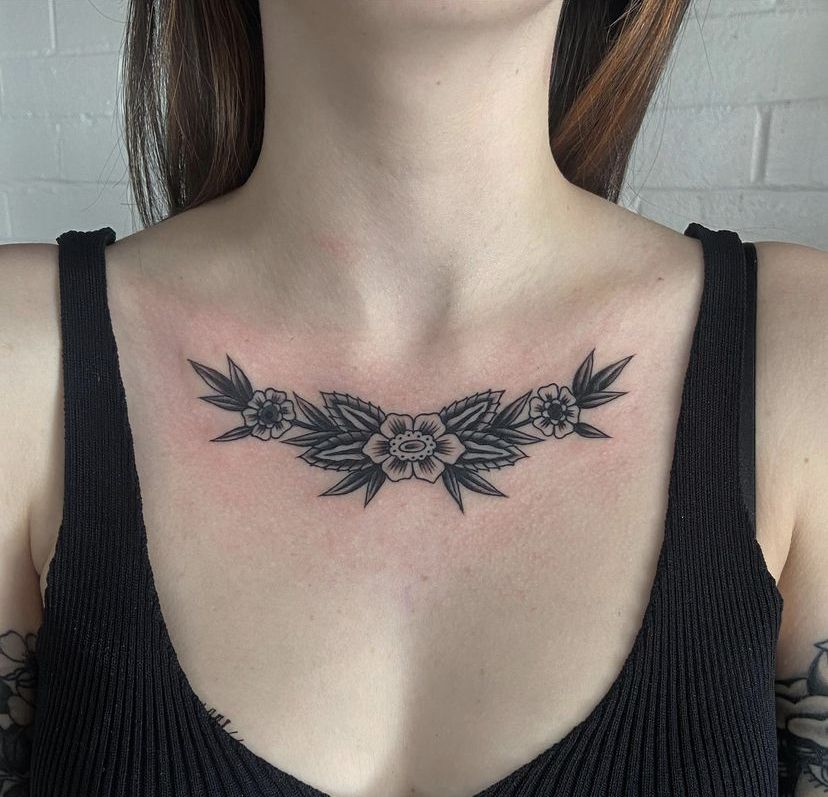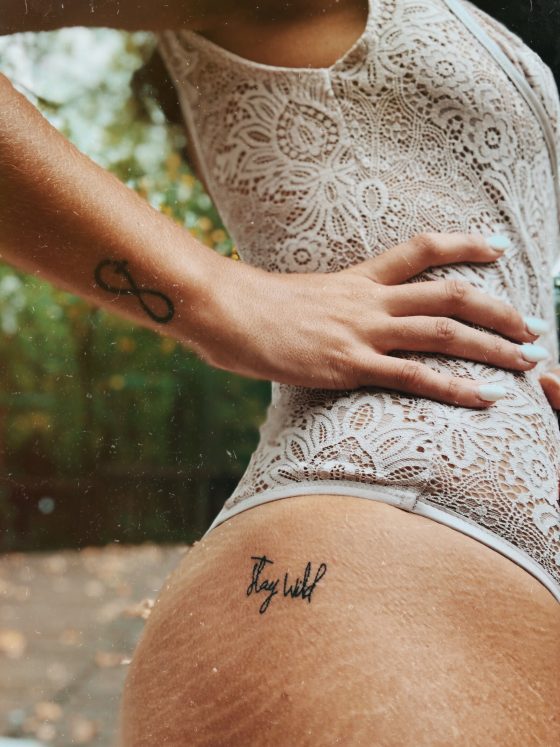
Getting a new tattoo soon? Unfortunately, there’s a lot of misinformation out there on the proper tattoo healing process, and I’m here to give you my professional take as a tattoo artist.
Each artist has their own recommended process, but there will always be fundamental similarities.
The best way to know if you’re being given the correct information is to understand what to expect during the healing process. Below I’ll discuss the basics of healing and proper tattoo care so that you may enjoy your new addition for many years to come.
Without further ado, let’s get to it.

How Does a Tattoo Heal?
What a lot of people don’t understand is that getting a tattoo is considered a medical procedure, mostly because you are permanently changing your body with pigments and a sharp object, hopefully, a sterile needle.
Once you’re done getting that sick new piece, the next step is knowing how to heal it. Each studio has its own recommended tattoo healing process, but there are some do’s and don’ts you need to be aware of before jumping in the tattoo chair.
Keep in mind, the time it takes for a tattoo to heal depends on the individual. What should be taken into consideration, however, is that it doesn’t matter that we all heal differently.
If the studio you went to is clean, and you know the correct healing procedure, the risk of infection should be low.
A fresh tattoo will feel warm and can be a little red around the edges. For peace of mind, let’s take a look at the normal healing process.
Redness, Swelling, and Oozing

Once your artist is finished with your tattoo, they’ll wrap you up with clingwrap or rub the area down with rubbing alcohol and cover the tattoo with second skin. Depending on the studio’s approach you will either keep the clingwrap on for 24 hours and then take it off the next day, wash it, dry it, and put a little bit of unscented cream on it, but I’ll get to the moisturizing part in a bit.
For the first few days to a week of a fresh tattoo’s life, you’ll notice redness, some swelling (depending on how big the tattoo is), and oozing. This is normal, however, if the redness gets worse, the tattoo is very hot, swollen, and extremely painful, and you notice pus, that’s a sign of an

infection.
Either your artist wasn’t very clean, or you let your dog lick it, either way, it’s best to get to a doctor immediately so they can treat the infection. Believe me, you don’t want to leave an infection to get better on its own, not if you want to keep your limb.
Itching

Wounds itch sometimes, and believe it or not, a tattoo is considered an open wound. Part of the tattoo healing process is itching, and it can drive you up the wall because you’re not allowed to scratch it.
During the first and second weeks of a fresh tattoo, you can expect it to get dry, flakey, and very itchy. By all means, resist the urge to scratch or pick at scabs.
Having said that, a tattoo shouldn’t scab, and if it does, it means the artist went too deep or overworked the skin, causing damage and leaving you more susceptible to infection.
To alleviate the itch, you can apply some gentle, unscented lotion or an icepack. Another thing you are allowed to do if the lotion and icepack don’t work is lightly pat the area. It’s almost as satisfying as scratching without impairing the tattoo healing process.
Peeling

You best believe you’re going to shed your skin like some sort of reptile. Between the second and fourth week of healing your skin will begin to peel, this happens because your body is trying to get rid of what it perceives to be an injury.
For first-timers, don’t freak out when this happens, it’s perfectly normal and your tattoo isn’t going to fall out, believe me, I’ve had a few newbies sending messages asking if something is wrong with their tattoo. Follow the instructions set out by your artist and pay attention to what they have to say and the healing process should be pretty smooth.
How Long Do Tattoos Take to Heal?
The tattoo healing process is different for everyone, some people have extremely sensitive skin and therefore might be more susceptible to scabbing (remember, if your skin isn’t sensitive, your tattoos should not scab at all). There is no single answer to how long a tattoo will take to heal, some people are healed in two weeks, and some take three months. The best answer is that in six months, the tattoo will be fully healed.
Other things to consider are where it’s placed, how intricate it is, the size of the tattoo, and the style.
- Placement: Tattoos near joints or places that move a lot will take longer to heal because the constant movement interrupts the process.
- Intricacy: If the piece is overly detailed, there are more open wounds and that means it’ll take a bit longer to heal than a simple linework piece.
- Size: Going big means your tattoo is going to take a bit longer to heal, the same rule above applies here. Big designs require more shading, more lines, and maybe even color.
- Style: By style, I mean whether it’s going to be solid color or black and gray. Color requires packing, and unfortunately, packing is a little harsher on the skin because an artist has to go over certain areas more than once. There’s also the chance of overworking the skin meaning the tattoo could take even longer to heal.
The tattoo healing process is both simple and complex, if you don’t follow the guidelines the quality of the tattoo diminishes.
How to Properly Heal Your Tattoo
As I mentioned before, the way your artist tells you to heal your tattoo might be different from the way I may tell my clients to heal theirs. So, rather than telling you what my process is, I’ve decided to outline the most important aspects of the tattoo healing process that apply universally.
For an in-depth tattoo healing process guide check out our guide on tattoo aftercare.

Clean Your Tattoo
The most obvious of all of the steps in this one; keep your tattoo clean. However, don’t over-clean it because that will cause irritation.
Use a gentle anti-bacterial soap, and by gentle I mean so gentle you could wash a baby with it. Sometimes people think they can soak their tattoo or clean it with all sorts of antiseptic ointments and solutions, don’t do that, please, it’s literally any tattoo artist’s worst nightmare.

Don’t Over Moisturize
So, just like you don’t need to drench your new ink in all sorts of ointments and creams, you don’t need to over-moisturize it either. Keeping a tattoo overly moist allows for bacteria to grow and doesn’t allow your skin to breathe and dry out. The best way to make sure you’re not over-moisturizing is by following a routine.
After washing your tattoo, give it some time to air dry after patting it down with a clean towel. Once the area is dry enough, add a thin layer of cream over the tattoo. Apply as needed during the day but it should never be more than three times or you run the risk of keeping it too moist.

Protect Your Ink from the Sun
There’s nothing worse than getting a brand-new tattoo and then burning it in the sun. Not only is it unpleasant and painful, but you’re also damaging the tattoo.
If you’re hoping to keep it looking fresh and new, keep it out of the sun, and if you absolutely must be in the sun, wear a strong SPF sunscreen.
Interested in knowing just how bad the sun is for your new tattoo? Here’s an extensive article on all you need to know about sun damage and the importance of using a good SPF.

Leave Those Scabs Alone
As I’ve said, some people scab, no matter how gentle the artist is. If you’re prone to scabbing, don’t pick at them! That’s the easiest way to ruin the piece during the healing process, and even though touch-ups are inevitable, you don’t want to be touching up your brand-new tattoo.

What to Do if Your Tattoo Isn’t Healing
If you notice that your tattoo is taking longer than normal to heal, the best thing is to get it checked out by your artist first. They can take a look and let you know if you’re healing properly or give you advice on what you may be doing wrong.
Keep in mind, there’s a strong difference between it taking longer to heal and an infection. Get it checked by a doctor if you think it could be infected.
The tattoo healing process shouldn’t be more than a month, obviously, as mentioned, depending on any health issues or the time it naturally takes for your body to heal wounds. Another thing to keep in mind; when I say it shouldn’t take longer than a month to heal, I mean the oozing, redness, swelling, scabbing, and peeling.

Summary
Getting a tattoo is super exciting, but there can also be many complications if you don’t follow a proper tattoo healing process. The best thing to do is listen intently to your artist, if you’re a veteran tattoo collector and feel the artist is offering you incorrect information, do your own research, just like you are right now.
As long as you keep your new piece clean, and covered (or not depending on your artist’s advice), and give it the right amount of moisture your tattoo should heal up perfectly.







